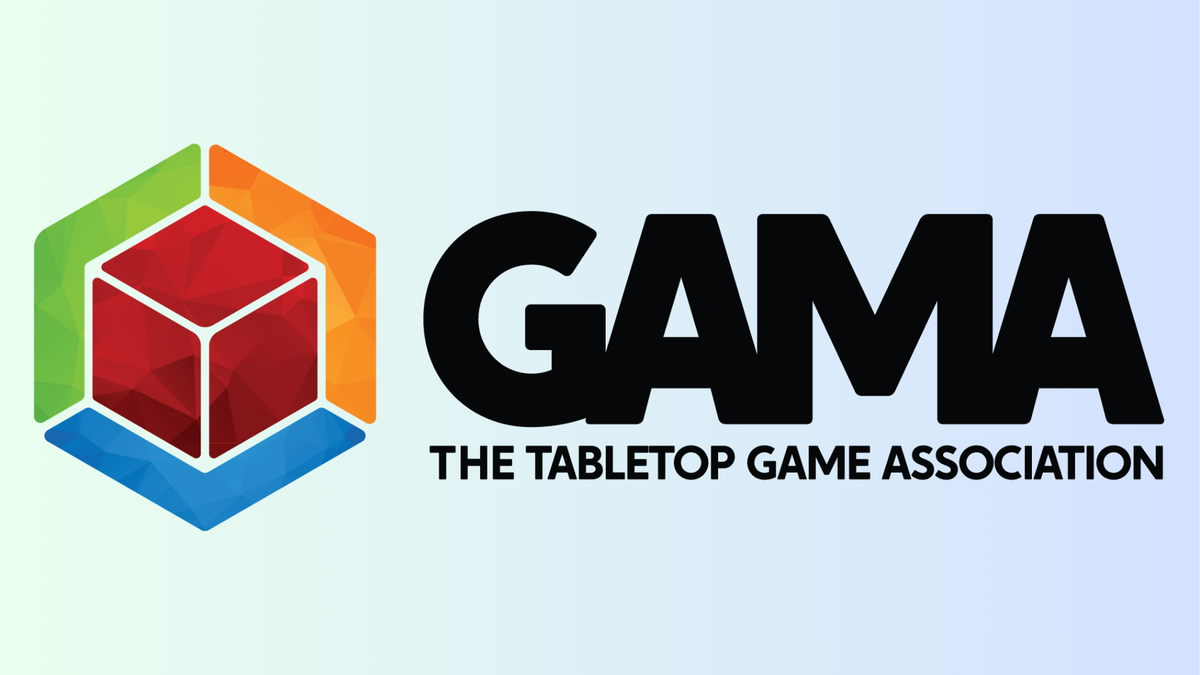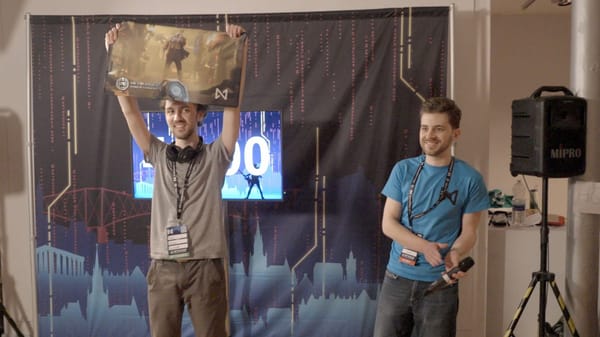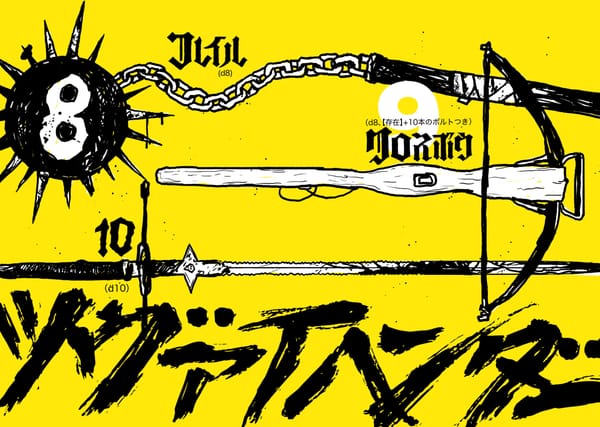GAMA has been rebranded as, er… GAMA
What’s in a name?

GAMA, the largest trade organization in the tabletop industry, is unrolling a new name and logo as part of a larger 10-year plan. Previously known as The Game Manufacturers Association (which everyone shortened to GAMA because acronyms are sexy and the legal name evokes spreadsheets and white collars) the organization will now do business as GAMA: The Tabletop Game Association.
A press release stated that the new name “better reflects the breadth and vibrancy of [GAMA’s] membership," alluding to a growing section of designers, publishers, and shop owners joining its dues-paying ranks. GAMA has historically represented more the interests of, as the old name suggests, manufacturing — the production and distribution companies responsible for turning game design into physical products. The annual GAMA Expo once reflected this, but even it has expanded its appeal to media, content creators, and event organizers.
“The tabletop game industry has grown far beyond where we were in 1977 when we were founded,” said John Stacy, GAMA executive director. “Our new name honors that evolution while maintaining our legacy of nearly 50 years of serving the tabletop industry.”
Here's the rest of the press release:
Going forward, the organization will be doing business as GAMA: The Tabletop Game Association. To reflect this change, the association has also updated its logo. While GAMA's legal name remains the Game Manufacturers Association, this updated identity speaks more directly to the diverse creators, media, event organizers, publishers, retailers, distributors, and manufacturers that make up our community.
This change reinforces GAMA’s commitment to inclusiveness, relevance, and leadership in the tabletop space. We’re excited to move forward under a banner that celebrates the full spectrum of our industry and the people who shape it.
As detailed by BoardGameWire, GAMA’s 10-year plan begins with a fresh coat of paint and nom de guerre but includes sustainability talks, global membership drives, and easing financial reliance on funds raised by the aforementioned GAMA Expo and its sibling public convention, Origins Game Fair. It will also continue supporting those members actively lobbying and suing the US government over economic strains introduced by Trump’s willy-nilly tariff policy; Tabletop games rely heavily on Chinese manufacturing and international commerce for raw materials; the industry was hit hard by both the uncertainty and impact of tariffs.
“This change reinforces GAMA’s commitment to inclusiveness, relevance, and leadership in
the tabletop space.”
Current president Nicole Brady told BoardGameWire that this 10-year plan will hopefully steer the organization away from a “whack-a-mole” style of addressing industry issues, which has left members and bystanders alike disheartened and cynical about GAMA’s potential to enact any real or lasting change. There’s an irony, then, to a pseudo-rebrand that clings tight to a widely accepted shorthand that, for many creators, is synonymous with closed doors and raised ladders. The trade organization’s 10-year plan expresses a new global perspective but lacks any concrete steps to uplift those creators.
Designers from underrepresented countries have been forced to build infrastructure outside of American-focused organizations like GAMA. In 2023, roughly 90% of GAMA’s members were based in the US, which reflects the tabletop industry’s heavy reliance on American players and the broader Anglosphere. One of the biggest barriers facing designers outside of the US and most of Europe is that very few crowdfunding platforms allow truly global campaigns. Kickstarter, for example, only allows accounts located in twenty-five countries to launch campaigns; from Asia, they permit residents from Hong Kong and Japan to launch campaigns.
No African countries are on the list, nor any in South American. South of the US border, only Mexico can currently use Kickstarter to fund tabletop projects. This disparity feels like a prime area where a trade organization such as GAMA could step in and offer advocacy, direct aid, and networking with existing publishers. Apparently, that must wait for phase two’s rollout between 2028 and 2030.
Instead, GAMA’s immediate goals include certification programs, professional development, and an anti-counterfeit initiative, among others. It also is actively seeking “a broader mix of revenues” to ensure its own continued existence, according to Stacy. Right now, Stacy and Brady are communicating a lot of hopes and dreams but not providing substantive details to back it up. For many tabletop professionals, this new GAMA might not seem that different from the old.





